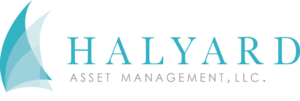November 2015 – Monthly Commentary
November 2015
Conditions are now in place for the Federal Reserve to finally raise interest rates at the December 16th meeting. On Friday, the BLS released the second consecutive robust jobs report, after softer reports for August and September. The unemployment rate has fallen to 5%, and wages are now rising at approximately a 2.3% annual rate. Moreover, there are 5.5 million unfilled jobs, just a shade below the all time high, which should keep job growth strong. Core Inflation, as measured by the consumer price index (CPI) ex food and energy, rose 1.9% year-over-year in October, essential matching the 2.0% target of the Federal Reserve. Analysts look to CPI ex food and energy, as opposed to headline CPI, as it’s a less volatile series and more indicative of consumer behavior. Food and energy are subject to supply and demand idiosyncrasies such as the weather on crops and OPEC on energy. Energy prices have fallen 17% over the last twelve months through October due to the plunge in oil and gas. When that drop is included in headline CPI, the year-over-year increase was only 0.2%. On the other hand, prices for goods and services, excluding energy, which represents 58% of the CPI basket, rose 2.8% year over year. That measure, when paired with the 2.5% increase in wages noted in the October employment report illustrate that inflation appears to have bottomed and is now rising.
Of course, expectations of how the markets will react once the Fed finally raised rates vary widely. There are those that expect that even a 25 basis point rate hike will be too much for the economy to endure and are forecasting a recession. Their concern is not necessarily that 25 basis points would choke off lending. Instead they argue that raising rates while the European Central Bank and the Bank of Japan are easing policy is going to cause the value of the U.S. Dollar to rise versus our trading partners, having a deleterious effect on U.S. exports. There is some truth to that logic and the manufacturing sector seems to be suffering at the current exchange rate. However, given that the U.S. is primarily a service-based economy, we think the drag from a weakening trade sector will be minimal.
Another worry is that rate hikes will stifle the corporate practice of selling debt to buy back stock while simultaneously causing the borrowing costs of corporations to rise, neither of which would be supportive for stocks. With that pillar of support gone, stock prices would tumble from their lofty valuations and that would dampen economic growth. Again, it’s a plausible scenario, but we deem it not likely. First, the fixed income community continues to be starved for yield and will likely increase their allocation to corporate debt as rates rise. Second, marginally higher borrowing rates are not likely to slow the “issue debt to buy stock” alchemy, as it allows companies to show improving earnings per share without an increase in revenue. Finally, corporations have been locking in their borrowing costs, so while higher rates will increase borrowing costs, it’s likely to be only at the margin. Instead, we think that job growth and low energy prices have created a virtuous circle of personal consumption, with robust job growth and consumers having more discretionary income. Ironically, the fear of the scenarios just discussed has resulted in a “one and done” consensus view that after initially raising interest rates, the Federal Reserve will be slow to raise rates subsequently. The current view is that there will be two additional rate hikes in 2016, with Fed Funds ending the year with a 0.75% – 1.00% range. That view doesn’t comport with our view that unemployment rate continues to fall and wages continue to rise. Under that scenario, we suspect that the FOMC will find itself again coming under scrutiny and the rhetorical battling among members to intensify.
